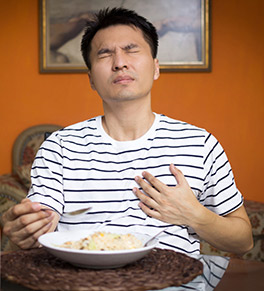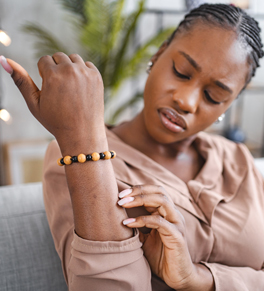Sleep-Related Movement Disorders
Sleep-related movement disorders (SRMDs) cause movement during or prior to sleep and make it difficult to fall asleep or stay asleep. They can dramatically impact sleep quality and quantity.
Types
Restless Leg Syndrome (RLS) is a disorder related to sensation and movement. It causes the irresistible urge to move the legs and an itching/burning sensation when you lie down to rest making it impossible to get comfortable enough to fall asleep. The cause of RLS is unknown but it is worsened by other health conditions such as low iron levels, diabetes, pregnancy and the use of allergy medications, antihistamines, over-the-counter sleep aids and many anti-depressants.
Periodic Limb Movement Disorder (PLMD) also involves repetitive movements, most typically in the lower limbs, that occur about every 20-40 seconds. You may recognize these movements as brief muscle twitches, jerking movements or an upward flexing of the feet. They cluster into episodes lasting anywhere from a few minutes to several hours. The cause of PLMS is often unknown but can be linked with a variety of other medical conditions including other sleep disorders. Many people are unaware that they are moving their limbs in their sleep. Often, their partner will bring it to their attention because it's disturbing their sleep as well.
Rhythmic Movement Disorder (RMD) involves repeated body movements while drowsy or asleep and is common in infants and children. The body movements can take the form of body rocking, head banging or head rolling and can also be accompanied by an audible sound. Most children do not need help for these types of rhythmic movements because they can be a normal part of their sleep development. It’s important to schedule an appointment with a sleep provider if the movements injure your child or prevent them from achieving high quality sleep.
Sleep Bruxism occurs when you are grinding, gnashing or clenching your teeth while sleeping. People who have sleep bruxism are more like to have other sleep disorders such as snoring and sleep apnea. Mild bruxism may not require treatment, but it can sometimes be frequent and severe enough to disrupt sleep and lead to jaw disorders, headaches, damaged teeth and other problems.
Diagnosis
A consultation with one of our board-certified sleep physicians is the first step in diagnosing a sleep-related movement disorder. Your doctor will thoroughly review your medical history; ask about your symptoms, sleep patterns, and environment; perform a physical exam; and may order diagnostic tests.
Other sleep disorders, like obstructive sleep apnea or snoring may also be playing a role in your sleep problems. Your physician may order a sleep study to ensure that all your sleep issues are diagnosed correctly.
Treatment
Many times RLS and PLMD can be successfully treated with behavioral modifications such as exercise, smoking cessation, caffeine and alcohol reduction, and relaxing the muscles with massage or a hot bath before bedtime. There are also a variety of medications available.
For more information about our services, please call us at 714-509-2230.








